March 27th, 2014
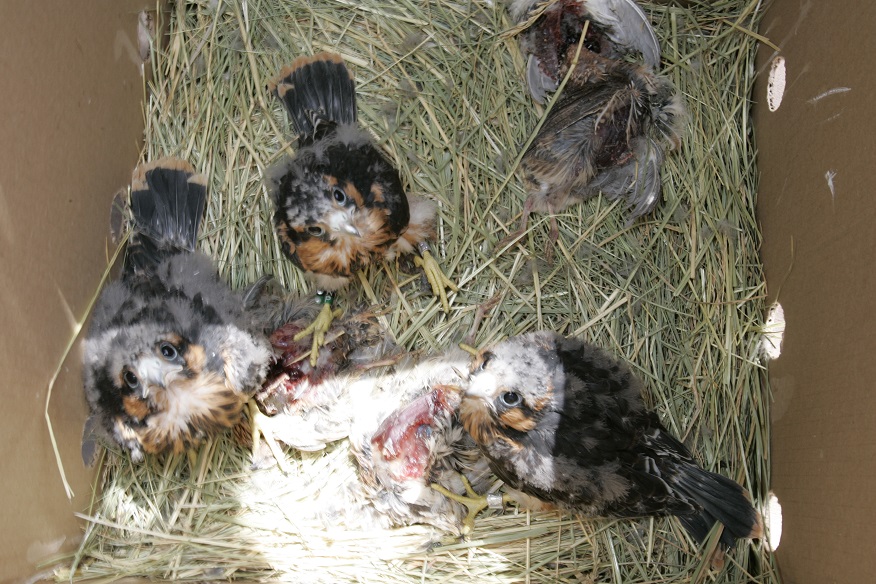
Baby Aplomado Falcons
This is Passport to Texas
As spring approaches it’s good to know what to do if you find a baby bird out of its nest. And the babies most likely to try and get a jump on spring are blue jays.
12— I don’t know what happens. They just jump the nest a couple days early, and the problem is they’re in the backyard where the dogs and cats and kids are. So you really have to focus on not trying to pick up the bird.
Cliff Shackelford, Parks and Wildlife’s non-game ornithologist, says the baby is not abandoned; mom and dad are nearby.
16—The better thing to do would be to pull the cats, dogs and kids in for that day or two and let the baby blue jay make it on its own with mom and dad. Because the fate is not the same if you pick it up and try to rehabilitate it. Mom and dad know how to raise baby birds a lot better than we do.
Even so, it‘s good to be prepared if you do find a baby bird that is vulnerable and unattended.
14— On your refrigerator, where you have the numbers of 9-1-1 and poison control, you should have [the number for] your local rehabilitator on your refrigerator ahead of time. Once you do get that baby bird — you don’t have a lot of time.
Find a list of wildlife rehabilitators by county on the Texas Parks and Wildlife website.
For Texas Parks and Wildlife…I’m Cecilia Nasti.
Posted in Wildlife | Comments Off on Wildlife: Baby Bird Down! Now What?
March 26th, 2014
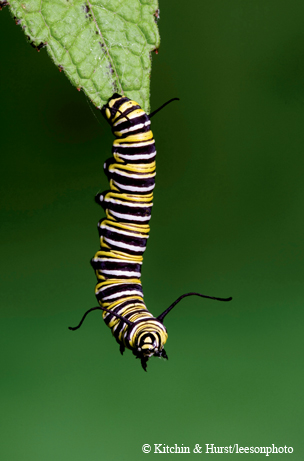
Monarch butterfly life cycle..4th Instar on Joe-Pye Weed.
This is Passport to Texas
Loss of grasslands to farming and development means fewer “refueling stations” for monarchs during their migration. Master naturalist and writer, Rob McCorkle, says when homeowners living along the butterfly’s migratory route plant milkweed they provide food and habitat for adults and their young.
13— There are different milkweeds in Texas – there are about three predominant types of milkweed: antelope horn, green antelope horn and zizotes is the third one. They’re now becoming more available.
Grasslands aren’t the only monarch habitat disappearing. Logging of fir trees in Central Mexico where monarchs overwinter has severely reduced their roosts. So why provide food and shelter along their migration route if in the end, there’s no place for them to hibernate?
27— That is a good point. The Mexican government in collaboration with the US and Canada have formed a trilateral commission that has studied this impact for several years now. And they’ve taken steps to limit logging and protect the remaining habitat – and have had some success. A single monarch female can lay 300 to 400 eggs. So, the potential is there for the population to rebound to some degree.
Find links to follow monarch’s migration route, learn about installing a monarch friendly garden, and more at passporttotexas.org.
For Texas Parks and Wildlife, I’m Cecilia Nasti.
Monarch Migration Routes:
http://www.learner.org/jnorth/maps/monarch_spring2014.html
Butterfly Garden:
http://www.monarchwatch.org/garden/
Posted in Conservation | Comments Off on How to Help Monarchs
March 25th, 2014
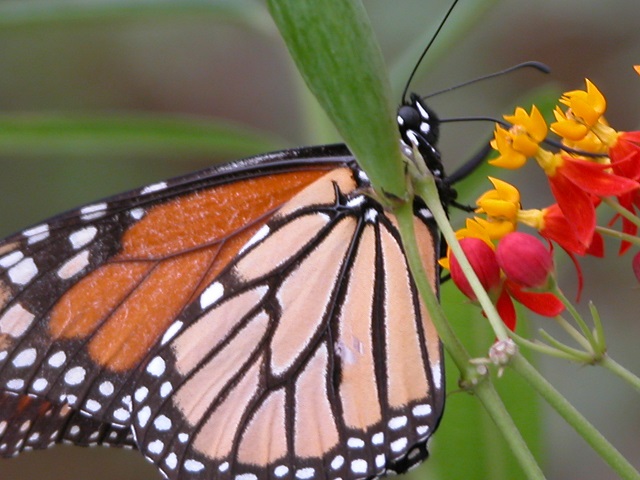
Monarch butterfly
This is Passport to Texas
Fragmentation and loss of habitat creates hardships for monarch butterflies during migration and hibernation.
14— That is being propelled by the elimination of grasslands in the Midwest [where monarchs fuel up during migration] to plant GMO (genetically modified organisms) soybean and corn crops, and to plant crops for biofuels.
Logging in the mountains of Mexico where monarchs overwinter also affects the species. Rob McCorkle wrote an article about the decline of the monarch population for the March issue of Texas Parks and Wildlife Magazine.
At their peak, a billion monarchs filled the skies; today that number is under 50-million. Yet, each of us along their migratory path can help them on their travels by doing one simple thing.
16— The most significant thing scientists say you that you can do is plant milkweed, because that is the sole species the monarchs depend on to lay eggs for emerging caterpillars to feed on.
Find more information about the kinds of milkweed to plant for monarchs at www.plantmilkweed.org. Tomorrow, the kinds of milkweed best suited for monarchs, and how the US, Canada and Mexico are working together to save this iconic species.
For Texas Parks and Wildlife, I’m Cecilia Nasti.
Posted in Conservation | Comments Off on Why Monarchs are in Decline
March 24th, 2014
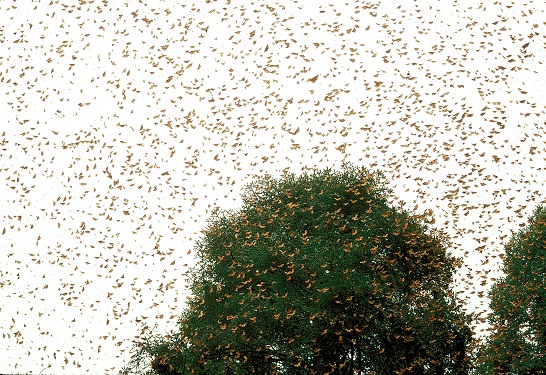
Monarchs at their overwintering site.
This is Passport to Texas
Extreme weather and vanishing habitat, have taken a toll on monarch butterflies.
14—To use the oft-worn cliché about a “perfect storm,” that’s sort of what’s happened to the monarchs, unfortunately, and has caused their populations to plummet almost 80% since the winter of 2012.
Rob McCorkle wrote an article about the monarch decline for the March issue of Texas Parks and Wildlife Magazine. Monarchs migrate to Mexico from Canada and the US.
18—The first hit [to the monarchs] was in 2002 when they had a severe freeze in the mountains of Mexico where the population overwinters. Monarchs can take cold weather, but if it rains, or snows and they get wet – they can’t survive. They died off by the millions that year.
Weather is only part of the equation. Habitat loss is the other.
33—That is being propelled by the elimination of grasslands in the Midwest to plant GMO soybean and corn crops, and to plant crops for biofuels. What that’s done, obviously, is to limit the places where the monarchs go to fuel up for their migration. Also, the overwintering forests in the mountains of Central Mexico have been logged heavily and are being impacted by [tourism] people going to see the monarchs that overwinter there in the fir trees.
More on why monarchs are in decline and how to help — that’s tomorrow. For Texas Parks and Wildlife, I’m Cecilia Nasti.
Posted in Conservation, TPW Mag, Wildlife | Comments Off on TPW Magazine: Monarch Decline
March 21st, 2014
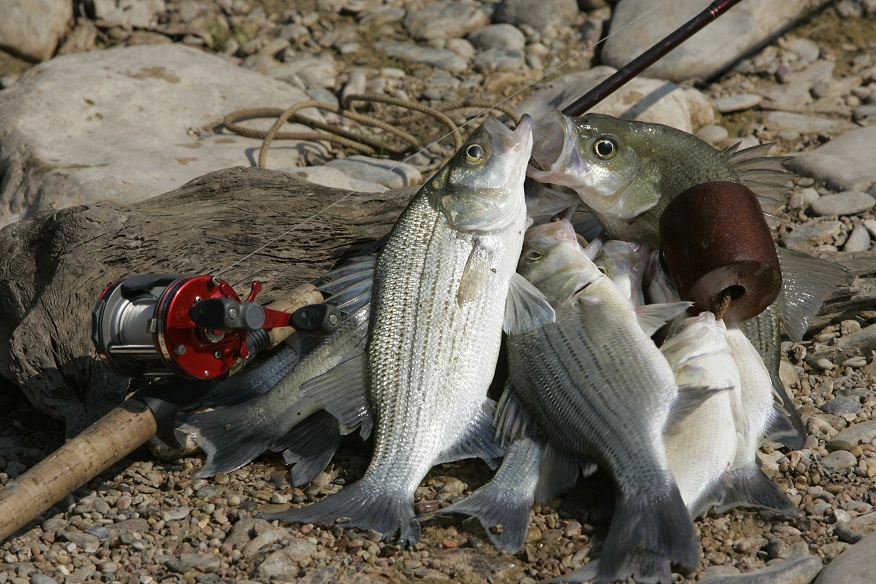
A stringer of White Bass at Colorado Bend State Park
This is Passport to Texas
The springtime white bass run is among the most anticipated freshwater angling events in the state.
14—Generations after generations seek these fish during this time, and it’s a good way to get kids involved in fishing. So there are a lot of traditional values to this fishery. And, there’s also a big economic impact by this fishery. It’s very important to our economy.
Marcos De Jesus is a fisheries biologist. Water levels in reservoirs are at historic lows, and river flows are also down due to severe drought, and that spells trouble for spring’s white bass run.
23—Because the water is so low, the connectivity between the lakes and the rivers are being lost. So, without the flows that the fish need, they’re not running up river [to spawn]. So, our concern is the fishery is not there for our anglers, and number two, these fish are not reproducing properly. And that starts to concern us because these fish are short lived, and we need them to reproduce within the second or third year.
De Jesus says east Texas isn’t experiencing flow issues like the Hill Country; so, there will be fish runs available in the state.
12—Anglers need to understand that these drought cycles occur, and that the fish still can be caught in the main reservoirs. It’s just that they may not be able to catch them in those typical areas upriver where people traditionally catch them.
Find the fishing forecast on the Texas Parks and Wildlife website.
For Texas Parks and Wildlife, I’m Cecilia Nasti.
Posted in Fishing, Freshwater | Comments Off on Fishing: Drought and the White Bass Run







 Passport to Texas is a
Passport to Texas is a  Passport to Texas is made available by:
Passport to Texas is made available by: